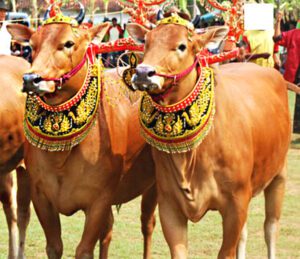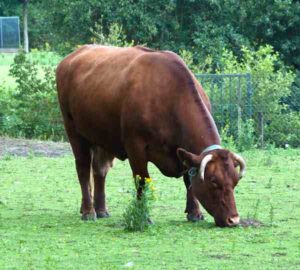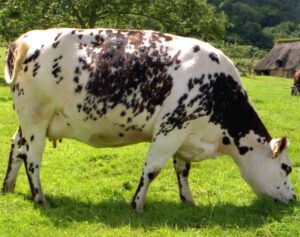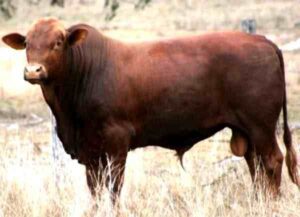The Brahman cattle is a very popular breed in it’s native area and some other countries around the world. It is a multi-purpose breed which is raised for many different purposes. It is good and raised for meat, milk and draught purposes.
This is actually an Indian breed of cattle. But the modern Brahman cattle was bred in the United States from 1885 from cattle originating in India, imported at various times from the United Kingdom, from India and from Brazil (these included Gir, Guzera, Indu-Brasil and Ongole stock).
These cattle are very strong and hardy animals. They have a high tolerance of heat, sunlight and humidity. They also have good resistance to parasites. The breed has been exported to many countries around the world, especially in the tropics.
Currently, this is the most numerous breed of cattle in Australia. The breed has been used in the creation of many taurine-indicine hybrids (some of which are Brahmous, which is established as a separate breed).
The Indian-origin Brahman cattle breed is named after the Brahmins (Hindu priests), who themselves are named after the Hindu deity Brahma. However, read some more information about this cattle breed below.
Brahman Cattle Characteristics
The Brahman cattle are medium to large sized animals. They have a high hunchback, and their head become long in size. Their dewlap is very thick and covered with skin.
Their ears are long and hanging. They are found mainly in gray and red colors. But brown, black and white colored animals are also common.
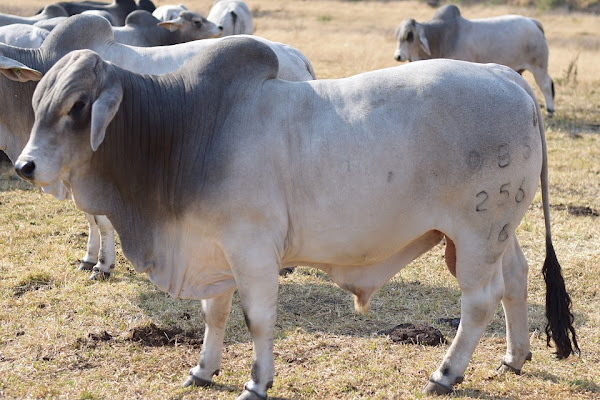
These animals are classified as a medium to large sized animals. Average body weight of the mature bulls is around 800-1100 kg. And average body weight of the mature cows is between 500 and 700 kg.
Uses
The Brahman cattle are multi-purpose animals. They are raised for many different purposes. They are raised and good for meat, milk and draught purposes.
Special Notes
The Brahman cattle are extremely strong and hardy animals. They are well adapted to a variety of agro-climatic conditions. They are known for their extreme tolerance to heat and are widespread in tropical regions. They are also resistant to insects due to their thick skin.
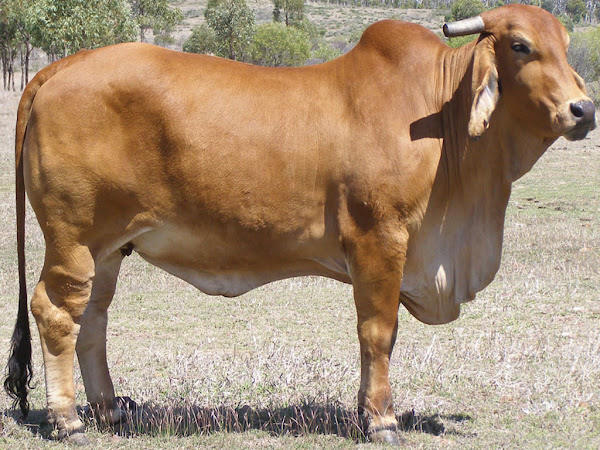
The Brahman bulls are used in the traditional sport of bull-butting in Oman and Fujairah. The Brahman cattle live longer than many other domestic cattle breeds (often producing calves at ages 15 and older). Review full breed profile of the Brahman cattle in the chart below.
| Breed Name | Brahman |
| Other Names | None |
| Breed Purpose | Meat, milk, draught |
| Special Notes | Very strong and hardy, known for their extreme tolerance to heat and are widespread in tropical regions. They are also resistant to insects due to their thick skin. |
| Breed Size | Medium to large |
| Bull’s Weight | 800-100 kg |
| Cow’s Weight | 500-700 kg |
| Climate Tolerance | All Climates |
| Coat Color | Mainly gray and red. Other colors also available |
| Horned | Yes |
| Milk Yield | Good |
| Rarity | Common |
| Country/Place of Origin | India |

